 The founder of hedge fund Kynikos Associates is betting against Intel’s share price and has done so for the last six months.
The founder of hedge fund Kynikos Associates is betting against Intel’s share price and has done so for the last six months.
 The founder of hedge fund Kynikos Associates is betting against Intel’s share price and has done so for the last six months.
The founder of hedge fund Kynikos Associates is betting against Intel’s share price and has done so for the last six months.
Intel released its fourth quarter 2014 results yesterday afternoon with income jumping 39 percent on improved demand for personal computer and server system chips. The company allowed that it is expecting a somewhat flat first quarter for 2015 which led shares 1.9% lower in after-hours trading. The PC Client Group’s earnings improved by three percent while the Data Centre Group’s earnings improved by 25 percent. Overall revenue increased by six percent year-on-year and gross profit margin exceeded 65 percent.
Analysts polled by Thomson Reuters expected per-share earnings of 66 cents and revenue of $14.71 billion.
For the current first quarter, Intel projected revenue between $13.2 billion and $14.2 billion and gross margin of 60 percent, plus or minus a couple percentage points. Analysts, on average, were expecting revenue of $13.76 billion and gross margin of 61.2 percent, according to Reuters.
For the year, Intel projected revenue to rise by a mid-single digits percentage rate and achieve a gross margin of 62% of revenue, plus or minus a couple percentage points. Analysts, on average, were expecting revenue to rise 4% and gross margin of 63.4%, according to Reuters.
PC Client Group Improves
Intel’s integral attachment to the PC market greatly affected earnings as the PC market growth slowed and consumer market demand was satisfied with less costly tablets and high capacity smartphones. The uptick in PC demand last spring has had a positive effect on earnings and aided in the company’s turnaround effort to become “the” dominant supplier in the mobile market. With Intel’s 14 nm manufacturing muscle Brian Krzanich is now “loaded for ARM” vowing to place 40 million Intel chips into tablets now dominated by ARM Holdings PLC.
3D 256 Gb NAND-Flash Bundling?
No mention was made by Intel of its recently announced 3D 256 Gb NAND-Flash devices. Intel has what can only be called an obsession with its ability to control the memory side of the sales equation without owning any of the fixed assets to produce it.
Analysts have been wondering why Micron was not more upbeat on the announcement; it is, after all the controlling partner in Intel-Micron Flash Technologies, Inc. (IMFT). Sources indicate that Intel will most likely begin bundling Processors and Memory kits with Intel claiming the lion’s share of margin leaving Micron to its own pursuits with its share of output.
Last but Not Least
The Data Centre Group is rumoured to be the earnings darling of the coming quarters with sources indicating market moving announcements over the first half of 2015. Those announcements concern Intel’s SDN for Cloud Computing efforts…
 There’s more research data on the tablet market out today and the latest report suggests gloom for 2015.
There’s more research data on the tablet market out today and the latest report suggests gloom for 2015.
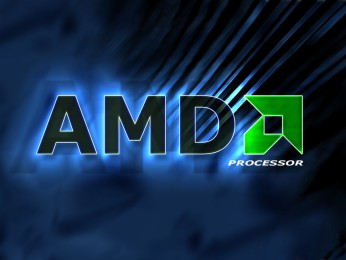 While Intel is pinning its future on the Internet of Things (IoT), AMD appears to be spurning it as if it were a rabid dog.
While Intel is pinning its future on the Internet of Things (IoT), AMD appears to be spurning it as if it were a rabid dog.
Its senior vice president and general manager of the computing and graphics business group John Byrne thinks that it is much wiser to keep pushing into the PC market, which is still a $40-billion-a-year opportunity.
Talking to Venture Beat he said that AMD has to execute on its upcoming Carrizo family of accelerated processing units (APUs), which will be focused on the mobile computing market. About 300 million PC processors and 90 million graphics chips are sold each year, and Byrne wants AMD to get its fair share of those sales.
Byrne thinks that setting up a chip making operation for the Internet of Things is just an invitation to lose money.
Byrne said while it concentrated on the IoT, Intel it was missing opportunities in the classic PC market.
“There’s still 300 million PCs, still 90 million graphics chips. If I look at Intel, Nvidia, and my revenue, that’s still a $40 billion market — even before you get to the IoT. If you look at the gross margin profile of that business, it’s still significantly more than AMD as a company’s average. There’s still significant market opportunities in the classic PC space,” Byrne said.
He said that AMD still had work to do in the PC chip market. It had to work on its x86 performance, ensuring that each product it bought to market is better x86. There needed to be improvements in graphics, notebooks needed to improve battery life.
Byrne said that it all meant that AMD could push into the commercial market a long more. He pointed out that AMD won the industry’s largest single tender in commercial 18 months ago in India and Elitebook with HP last year.
“Wait until you see the lineup of commercial platforms I have with Carrizo. It allows us to continue to attack that i3, attack that i5 consumer, and really get to penetrate the commercial market space. We’ll attack graphics. That’s going to be my strategy next, he said.
While he said that the Internet of Things is important there are two ways to make cash from it. Intel is concentrating on the silicon inside the wearable. However, that will cost under $10 and not make huge amounts of cash.
“You’re seeing that with Quark and some of the other investments our competitors are making. I’m not in business to lose money. Share and revenue is nice but so is profitability,” he said.
But all of those devices have to be connected and it is those higher end devices that AMD will be targeting.
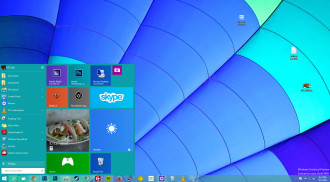 The arrival of Windows 10 and the introduction of 14 nanometre microprocessors are unlikely to stimulate much demand for PCs in 2015.
The arrival of Windows 10 and the introduction of 14 nanometre microprocessors are unlikely to stimulate much demand for PCs in 2015.
 At the CES show at Las Vegas this week, Intel Chief Executive Brian Krzanich showed off a computer built into a jacket button and a wristband that transforms into a selfie-snapping flying camera drone.
At the CES show at Las Vegas this week, Intel Chief Executive Brian Krzanich showed off a computer built into a jacket button and a wristband that transforms into a selfie-snapping flying camera drone.
It says a lot about where Intel sees the future of computing. Gone are the days of number crunching business computers, instead the world’s chip makers are developing gadgets which are better at photographing their own users.
Already tourist destinations are full of people carrying their phones on sticks so that they can take snaps of themselves at famous monuments without needing a friend. Now it seems that Intel sees a future for machines that can take pictures of bald heads at famous monuments while at the same time navigating through a sea of Japanese drones re-enacting a narcissistic battle of Midway on the Spanish Steps.
Krzanich used most of his keynote to talk up Intel’s efforts in computerised apparel and other sensor-packed gadgets as consumers get bored with their tablets and start selling their kidneys for the next shiny thing.
Curie, a new button-sized computer for smart clothes, is due out later in 2015 and includes Bluetooth radio as well as the latest from Intel’s Quark line of low-power chips. However Krzanich did sound a little like an East End market barrow boy when he talked about “rings, bags, bracelets, pendants, and yes, even the buttons on our jackets.” They are not dodgy, not dodgy.
Intel is working with Oakley to launch a smart gadget for athletes later this year, Krzanich said. The chipmaker in December announced it was developing smart glasses with Luxottica, which owns the Oakley brand.
Krazanich also said that he was spending $300 million to get more women and minorities in the technology and the video game industries. Note that money will be spent training women and minorities, there is no guarantee that Intel or any other technology company will hire them.
Intel has a poor record of accomplishment employing women and some minorities. While it is happy to hire Chinese and Indian workers, because they are nice and cheap, only a quarter of Intel’s US employees in 2013 were women and 12 percent of its workforce were Hispanic or African American.
Last year Intel made a huge mistake by backing the misogynistic GamerGate campaign to pull advertising from gaming news sites who dared to slam sexism in the gaming industry. In the end it changed its mind and resumed advertising.
 The CEO of Samsung has made a bid for his company to become an active player in the internet of things (IoT) by putting uo funding for developers.
The CEO of Samsung has made a bid for his company to become an active player in the internet of things (IoT) by putting uo funding for developers.
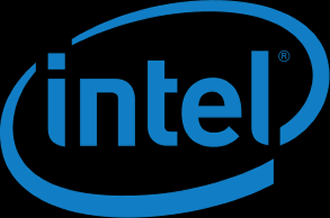 A report from Gartner said the top 25 vendors revenues rose by 11.7 percent, with those vendors grabbing 72.1 percent of the entire market revenues.
A report from Gartner said the top 25 vendors revenues rose by 11.7 percent, with those vendors grabbing 72.1 percent of the entire market revenues.
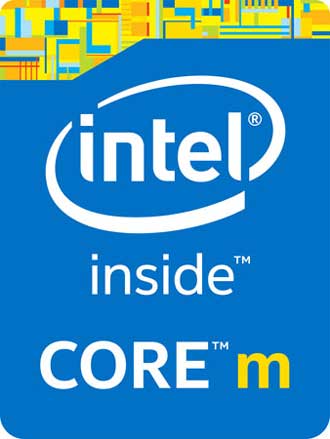 Intel has taken the wraps off its first 14nm processor, the Core M at the CES show in Las Vegas.
Intel has taken the wraps off its first 14nm processor, the Core M at the CES show in Las Vegas.
The CPU is designed for the ultramobile, low-power market and is an SoC die shrink of the existing architecture.
Where it does something interesting is on the GPU side with shedloads of improvements and advances,
The video decoder block has been beefed up with dual bit stream decoders, we are expecting to see other improvements but Intel has been quiet on exactly what it has tweaked and changed to date.
Intel does appear to have clear ground ahead of it. TSMC’s 20nm is only a slight improvement on die size and power consumption, Intel’s new Broadwell cores are 37 percent smaller.
What is odd, is that although more than half the chip seems dedicated to its GPU, Intel has made no announcement about supporting Direct X12. Nvidia and AMD has announced full DX12 support for their various current hardware,
Intel claims its new chip can boost battery life by 1.5 hours, speed video conversions, and offer a whopping 22 percent improvement to 3D performance. It has been a while that we have seen a significant productivity jump and we were not expecting to see much in the way of improved CPU performance from this chip anyway.
We are expecting Intel to announce the shipment of its Cherry Trail platform today too. This is the 14nm Bay Trail die shrink that’s been on the roadmap for a little while and is not really news. What is strange is how Intel has been quiet about the specifics of Cherry Trail so far. We have no benchmarks, statistics, or anything.
This is odd given Intel’s commitment to tablets and that pushing the Atom down to 14nm is a significant achievement. It should mean some performance gains and it is not clear why Chipzilla is not trumpeting it more.
 Vuzix has told the world+dog that the small time chipmaker Intel has invested $24.8 million in the company to speed up the launch of its internet-connected specs.
Vuzix has told the world+dog that the small time chipmaker Intel has invested $24.8 million in the company to speed up the launch of its internet-connected specs.
Intel bought preferred stock that is convertible into common shares equivalent to 30 percent of Vuzix, Vuzix said in a press release.
New York-based Vuzix develops computerised, internet-connected glasses and other video eyewear aimed at consumers, businesses and entertainment. Intel is dead keen to get its foot in the door of such market having been too late into the smartphones and tablets fad.
It is the second big deal to be announced in a month. In December, Italy’s Luxottica said it was joining forces with the US chipmaker to develop glasses that combine its top fashion brands with technology that could allow wearers to access information about their health or location.
Intel has also teamed up with watch retailer Fossil and fashion brand Opening Ceremony to develop wearable devices such as fashion bracelets with communications features and wireless charging.
It is all early days yet, but it seems that Intel is preparing the ground.
 Money that Intel has diverted to notebook manufacturers to stimulate demand for the machines is set to dry up next year.
Money that Intel has diverted to notebook manufacturers to stimulate demand for the machines is set to dry up next year.
That’s according to Taiwanese government quango Market Intelligence and Consulting (MIC), which also predicts the PC industry will flatline or even fall during the year.
Analyst Charles Chou told the Taipei Times that firms that got subsidies from Intel in an attempt to push notebook sales will find themselves out of pocket when Intel cancels the subsidies. He said that the only growth areas were likely to be Chromebooks and sales of machines to educational markets.
But in brighter news he said that we’ll all see more affordable 4K LCD TVs in 2015. He expects that the market wordwide will hit close to 30,000 units.
But if you don’t want a 40-inch or above LCD TV, the news is not too bright. 32-inch panels don’t have big margins and the manufacturers are concentrating their efforts on making ever bigger LCD TVs, in a pursuit of healthier profits.
However, the manufacturers can’t pull the plug on 32-inch or smaller LCD TVs because people in many countries don’t have the money to spend on mega TVs.
It’s also likely they don’t have the space, either.
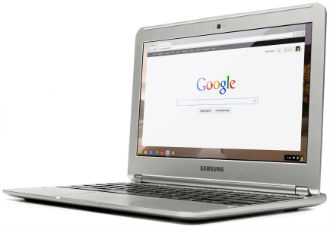 A number of vendors plan to release large screen Chromebooks in the first half of 2015 with prices set to challenge Wintel based notebooks.
A number of vendors plan to release large screen Chromebooks in the first half of 2015 with prices set to challenge Wintel based notebooks.
Google has laid out a reference framework for Chromebooks which means they will cost less than $300 per unit, according to a report from market intelligence firm Digitimes Research.
Dell and Acer will take the lead in cutting prices, with the former introducing a 15.6-inch Chromebook and Acer will introduce a model with the same size screen early next year.
Both are set to use Intel’s Broadwell-U microprocessor and the prices will mean stiff competition as Microsoft wants its hardware partners to produce notebooks costing less than $250.
However, Microsoft cannot hope to get hardware vendors to make Windows 8.1 with Bing machines for the same price point and with similar performance. Although Microsoft has cut licensing fees for Windows in an attempt to beat off competition from Chromebooks, the bill of materials to make notebooks precludes screens 15 inches and above.
 Average selling prices (ASPs) of Intel based ultrabooks and tablets fell by close to eight percent this year in all markets worldwide.
Average selling prices (ASPs) of Intel based ultrabooks and tablets fell by close to eight percent this year in all markets worldwide.
ABI Research said that household income needed to buy either a tablet or ultrabook fell by 30 percent during the year, giving access to many new households.
The market research company surveyed 22 different countries between 2013 and 2014 and estimates ASPs fell by 8.5 percent for tablets and 7.1 percent for ultrabooks.
The price drops mean a wider range of countries can now afford the gadgets and even though growth is falling for both types of devices, analyst Stephanie Van Vactor said “affordability could help prevent a drastic decline in sales”.
The affordability index is highest for the US, Japan and Germany, but some countries showed a marked decline in prices. She said Chile, for example, saw a fall in prices of 56 percent for both ultrabooks and tablets.
But India saw an increase in prices of 22 percent for the devices.
Van Vactor estimates we’ll continue to see competition increase and that means prices will once again fall next year.
 Intel has pledged to write a cheque for at least $550 million in the Promised Land over the next five years.
Intel has pledged to write a cheque for at least $550 million in the Promised Land over the next five years.
This is part of Intel’s promise to spend a total of $6 billion to upgrade its Kiryat Gat plant for the manufacture of new advanced chips for its next generation devices.
The $550 is part of Intel’s offset purchase arrangement with the state, which is providing the company with grants of up to $600 million over the next five years as well as a major tax break through 2023. Intel will get two $300 million grants, distribution of which will be spread over five budget years.
Although these figures look great for Chipzilla, executives will be happier with the news that it will only have to pay a corporate tax of only five percent until 2023. Others in Israel have to give the tax man 26.5 percent. In return, Intel committed to hiring at least 1,000 new employees, at least half of whom will be residents of communities in southern Israel. In addition, the company promised to spend at least $550 million.
Intel is committing to spend what it is getting from the government in direct grants, but the Economy Ministry claims the arrangement was great for the Israeli economy.
“This arrangement will have a very positive effect on hundreds of small businesses and suppliers,” said Ziva Eiger, director of investments at the Industrial Cooperation Authority.
“Offset agreements such as this are platforms for leveraging public expenditures for the benefit of the Israeli economy, both for training and encouraging further expansion of small suppliers for the local and world market, and to enhance Israel’s brand as an attractive place for foreign investment,” Eiger added.
“As a result of this agreement, Israelis can look forward to thousands of more jobs being available. It is a model for offset agreements that can provide benefits to all sides.”
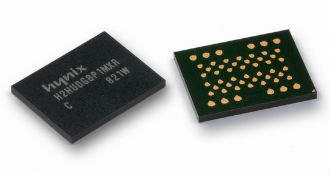 Revenue from worldwide sales of semiconductors will rise by nearly 10 percent this year, its strongest performance since 2010.
Revenue from worldwide sales of semiconductors will rise by nearly 10 percent this year, its strongest performance since 2010.
Figures released by IHS Technology show that global revenues will be worth $353.2 billion this year, a rise from $322.8 billion in 2013.
Dale Ford, chief analyst at IHS, said the growth is broad based – a nearly all semiconductor suppliers have benefited.
IHS segments the semiconductor market in 28 ways, and Ford said that 22 of those have grown this year, compared to 12 showing growth in 2013.
DRAM and flash memory were the movers and shakers in the market, and while revenues for those sectors have risen by around 20 percent, other segments are also showing healthy growth.
DRAM and light emitting diodes (LEDs) have shown growth, and microprocessor markets are also showing strong growth.
Mediatek and Avago are showing strong growth in the semi league table.
The top five players, as the following table shows, are Intel, Samsung, Qualcomm, Micron, SK Hynix and Texas Instruments.
